“We will be known forever by the tracks we leave” – Santee Sioux Tribe
In this post, you will find…
- Brains vs. computers
- Your neurons are unusual cells!
- A “Moore’s Law” for brains?
- Native history, artists – and ART!!
- Kanani Miyamoto on Native artists at Intel
- Intel volunteers make FIFTY Brain Boxes for Noggin!!
Students of all ages ask if our brains are like computers.
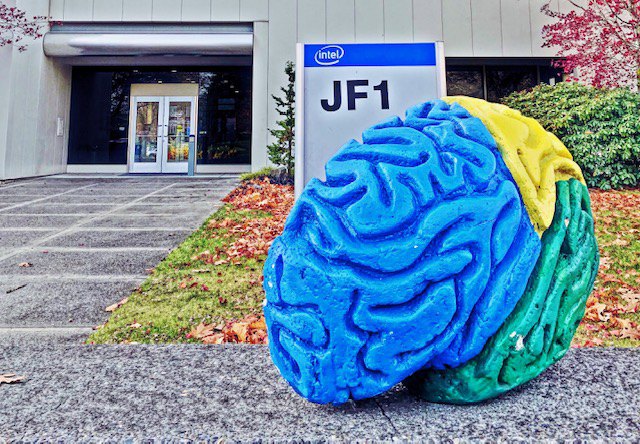
Is there an “Intel Inside” our skulls..?
Brains, like all body tissues, are made of cells.
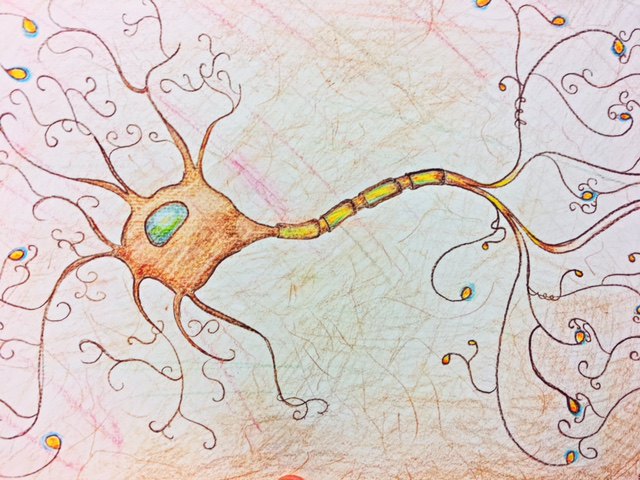
Kids and teachers are consistently amazed by the vast number of brain cells (called neurons) in our heads, and how our development involves a precipitous plunge from close to 200 billion at birth down to about 86 billion in the young adult..!

More than half your brain cells are GONE by age 21…
LEARN MORE: The human brain in numbers
LEARN MORE: Cajal, Golgi, Nansen, Schäfer and the neuron doctrine
LEARN MORE: Make your own pipe cleaner neuron!

A new brain cell made in the classroom…
LEARN MORE: Observations of synaptic structures: origins of the neuron doctrine
LEARN MORE: Untersuchungen über Gehirn und Rückenmark des Menschen und der Säugethiere
LEARN MORE: The Discovery of the Neuron
Your neurons are unusual cells…
…with strikingly unique structural specializations which let them receive multiple inputs through their often extensively branching dendrites, a soma (or “cell body”) with a nucleus containing chromosomal instructions for which protein machinery to build, and a wirelike axon to carry waves of information-rich current towards their axon terminals…
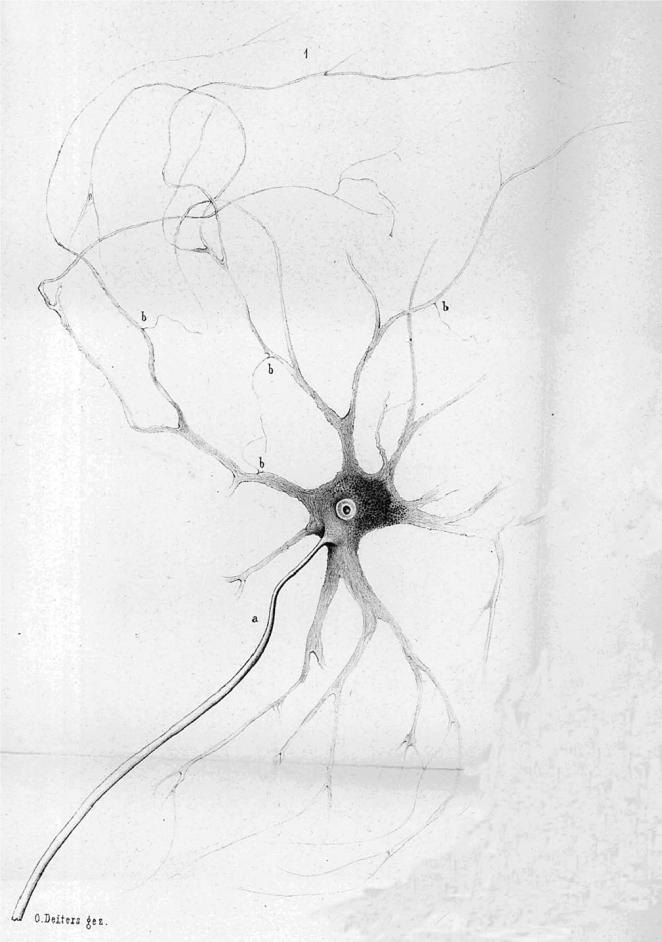
The “a” is for “axis cylinder” (axon): neuron drawn by Otto Deiters (published in 1865)
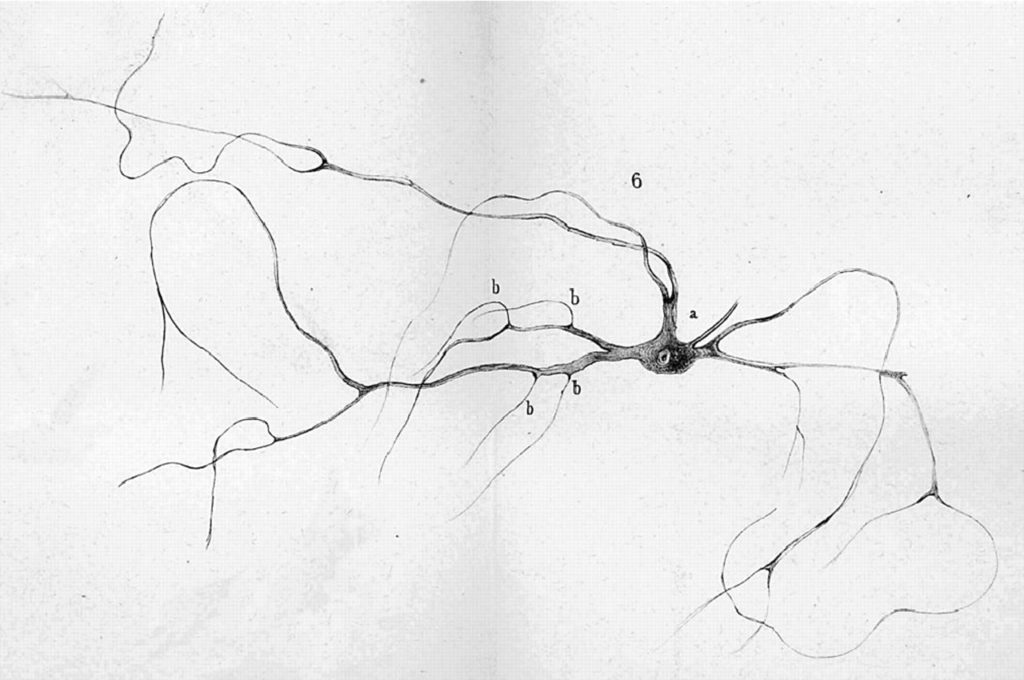
Another brain cell by Otto Deiters (“b” is for “protoplasmic processes,” or dendrites)
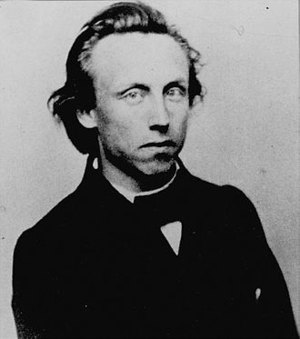
German neuroanatomist (and artist!) Otto Deiters…
But one neuron is pretty useless without connections to other brain cells. Thrillingly, they wire up to each other at small gaps known as synapses…
Forming neural networks: this happens in your brain…
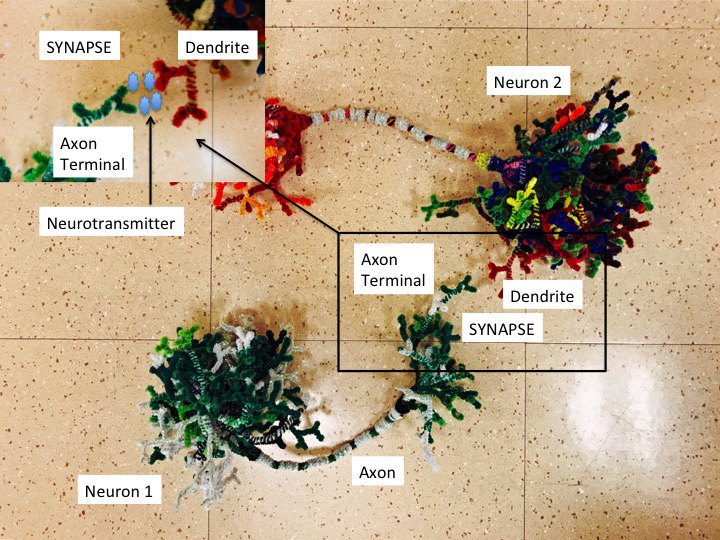
A cerebral circuit, in pipe cleaners…
Synapses are points of chemical communication, where the axon terminal of one neuron (say Neuron 1, above) releases neurotransmitters (upon the arrival of axonal current) to influence the response of the next neuron (2) in the network. Neurotransmitters can excite or inhibit the next cell, and even change gene expression, altering the structure and responsiveness of that synapse. Characterizing all the axonal connections in one human brain is the goal of the Human Connectome Project…
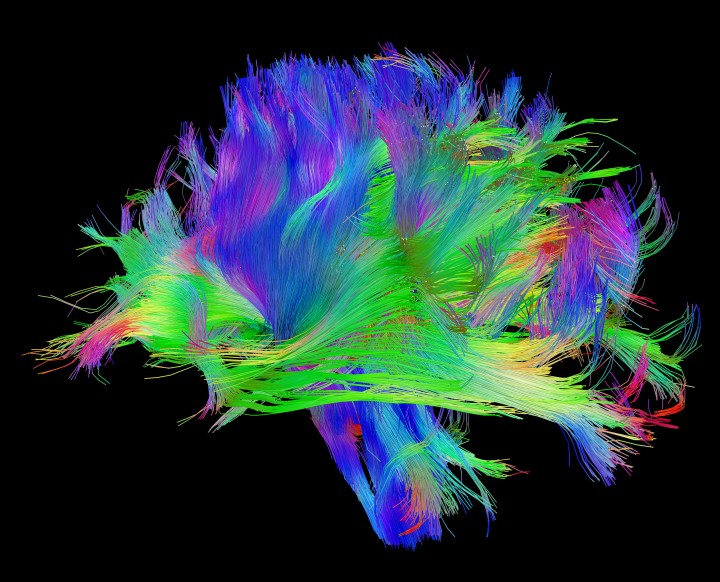
The Tracks We Leave: Axonal “tracks” in the human brain…
LEARN MORE: Human Connectome Project
The Allen Institute for Brain Science in Seattle is going one step further, attempting to characterize the entirety of all synapses in the brain – known as the synaptome. The Open Synaptome Project is an effort to map the brain in synapse-level resolution. With around 10,000 distinct synaptic connections on each neuron, this is a tremendously complex undertaking..!

FIGURE SOURCE: Each perception and action is associated with a pattern of neural activity. These patterns trigger postsynaptic responses of varying amplitudes in different synapse subtypes, producing zones and regions of differential activity in synaptome maps. As the mouse moves through its environment, the different patterns of activity produce a continuously varying synaptome output.
LEARN MORE: Architecture of the Mouse Brain Synaptome
LEARN MORE: Allen Institute Awarded $8.7 Million NIH Transformative Research Grant To Study Synapses
Is there a Moore’s Law for brains?
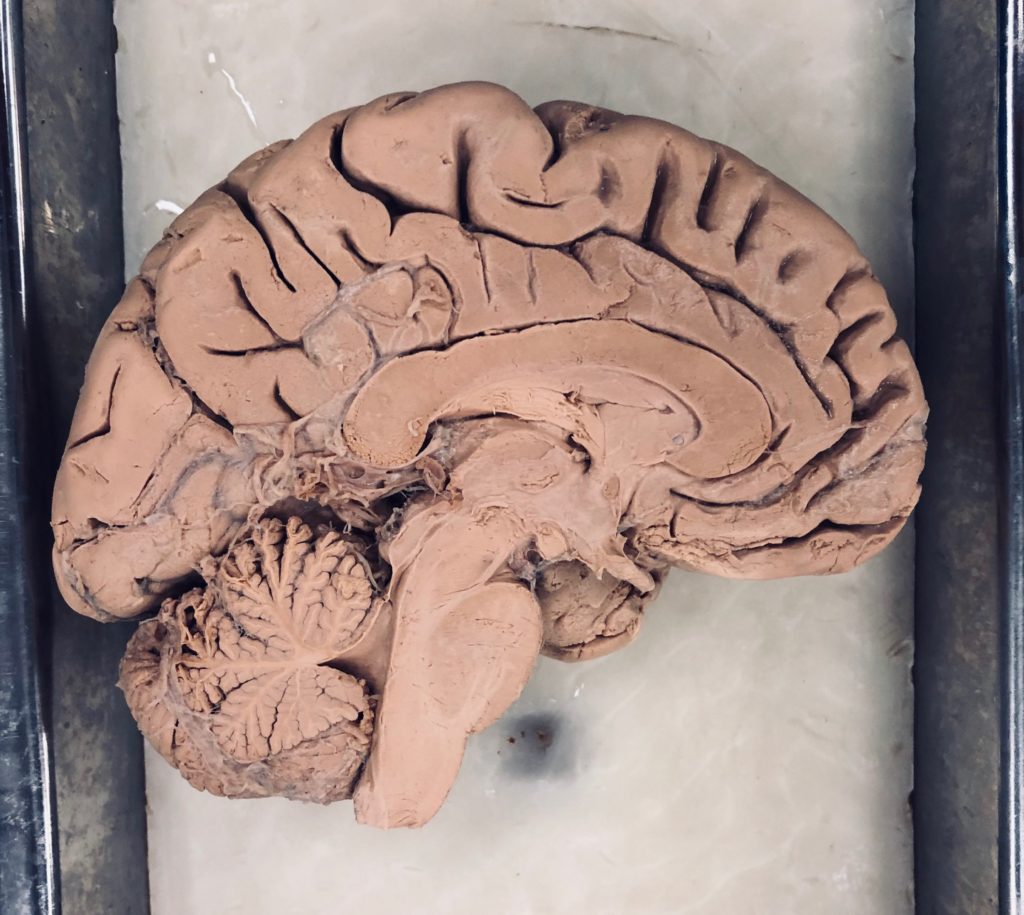
“The brain is a monstrous, beautiful mess. Its billions of nerve cells – called neurons – lie in a tangled web that displays cognitive powers far exceeding any of the silicon machines we have built to mimic it.” – William F. Allman (from Apprentices of Wonder. Inside the Neural Network Revolution)
Computers, of course, also have circuits, famously laid down in ubiquitous silicon chips!
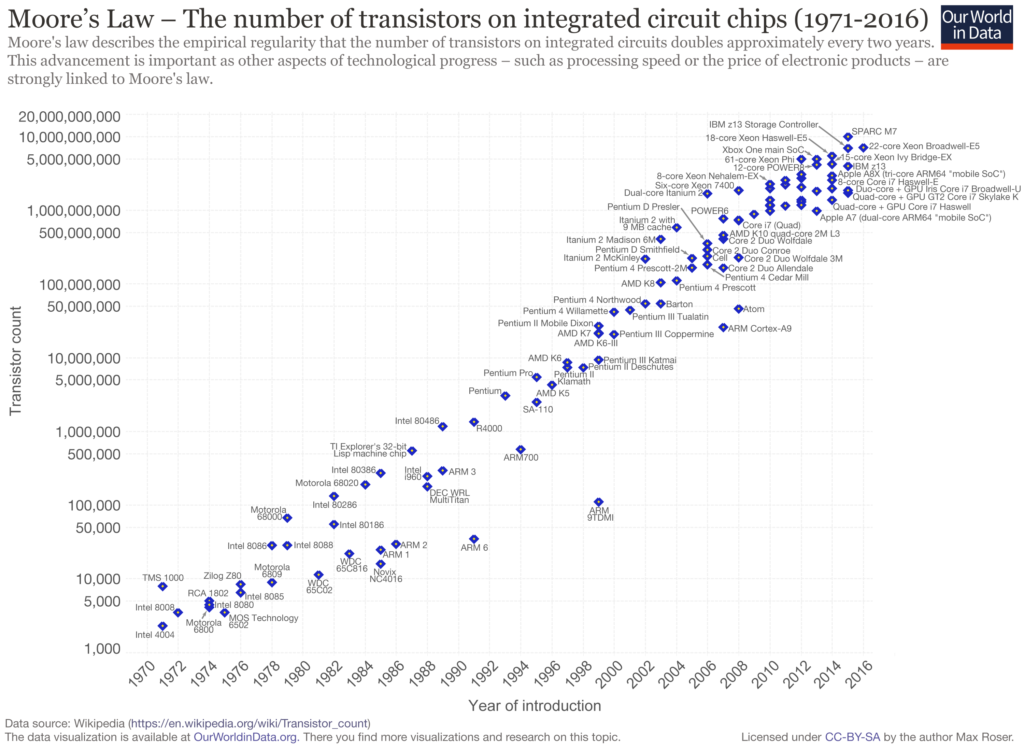
The number of circuits has increased dramatically with improvements in chip technology, initially following a trajectory described by Intel co-founder Gordon Moore, known as Moore’s Law…
LEARN MORE: Moore’s Law and Intel Innovation
LEARN MORE: Cramming More Components onto Integrated Circuits
LEARN MORE: Chipmakers look past Moore’s law, and silicon
LEARN MORE: Beyond Moore’s law

There is something akin to Moore’s Law going on in the evolution of select biological circuits, too, with differing neuron densities in different species.
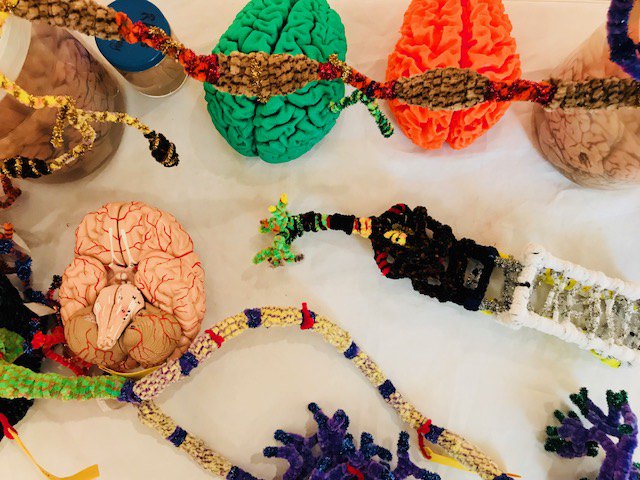
Primates, including humans, have a more dense cortex than any other mammal. We fit more neurons and synapses into smaller spaces…
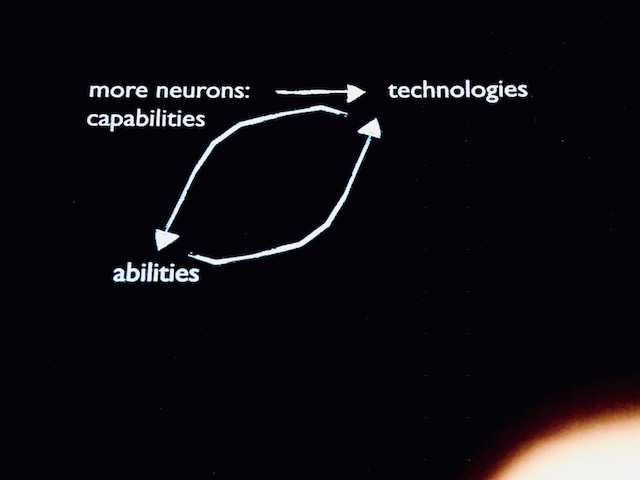
LEARN MORE: Soup for Brains!
However, evolutionary pressures for flight have led to some of the densest packing of synaptic circuitry in the compacted brains of some extraordinarily clever birds, including crows and ravens, known for their trickster nature, language and tool use from compelling Native tales and, more recently, from advances in neuroscience research…
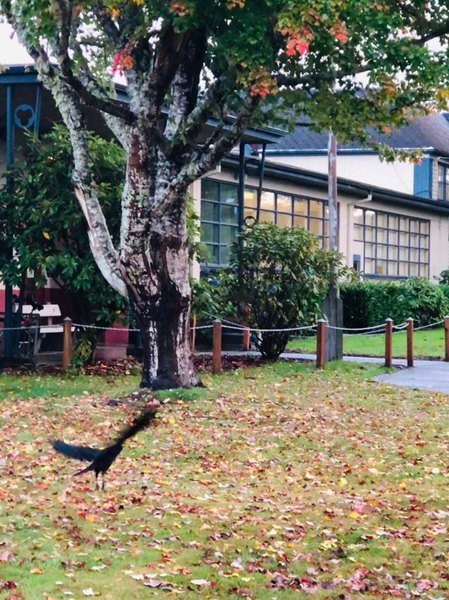

A denser chip: More neurons, more tightly packed, in the brains of crows and ravens…
LEARN MORE: Birds have primate-like numbers of neurons in the forebrain
LEARN MORE: Synapses & Stories: Coyote, Grizzly & their Brains!
But note the circuit (transistor) count in that Moore’s Law graph, above – which approached 20 billion in 2016. That’s still well below the number of neurons in an adult human brain, and orders of magnitude less than the number of synapses, which are estimated at near 100 trillion!
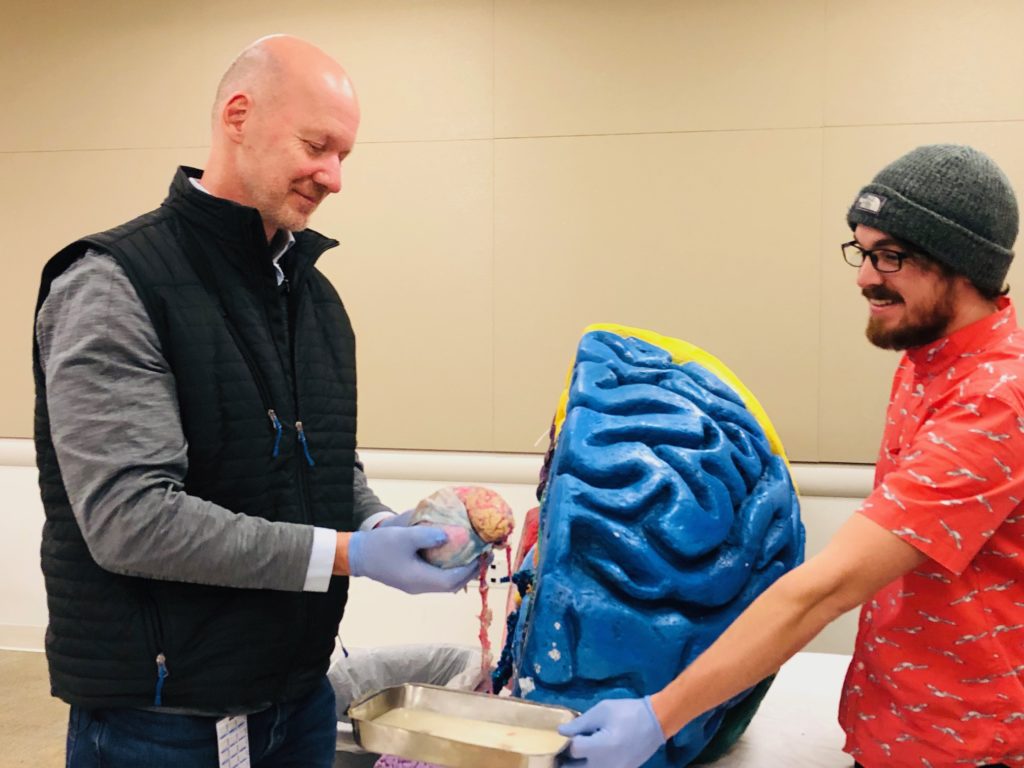
Roger Chandler, Intel Vice President, with 100 trillion+ circuits in both head and hands…
In addition, synapses, unlike transistors, are not fixed. Your synapses are changeable, adaptable, plastic; that is, what our neurons experience changes their gene expression and thus the structure and function of our own brain’s synaptome.
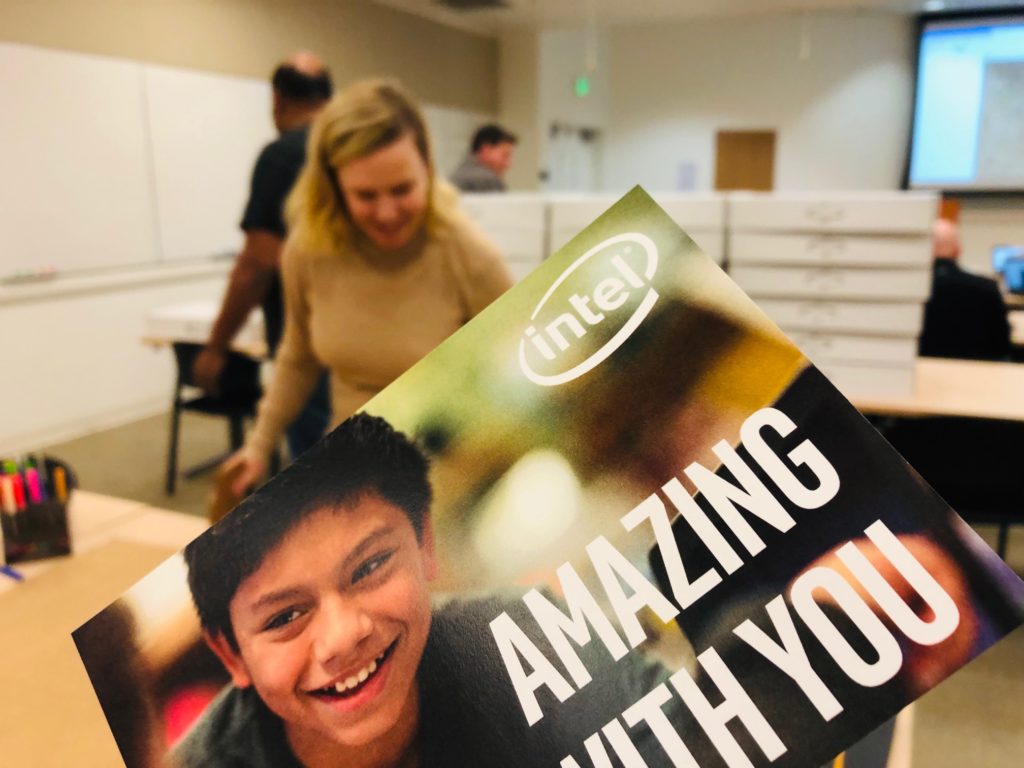
Our life experience alters the structure and function of our biological circuits…
Why are so many people unfamiliar with Native history, artists, and art?
We are thrilled to continue our collaboration with the Intel Native American Employees Network (INAN), whose members generously prepared a prototype “Noggin Brain Box” for Spirit Mountain Community Fund supported outreach with public school students in Lincoln and Yamhill counties earlier this fall…
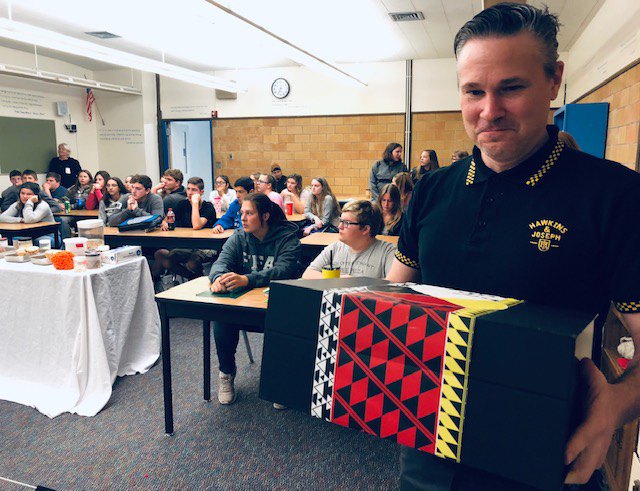
The Brain Box contained pipe cleaners, project instructions, 3D printed brain models…
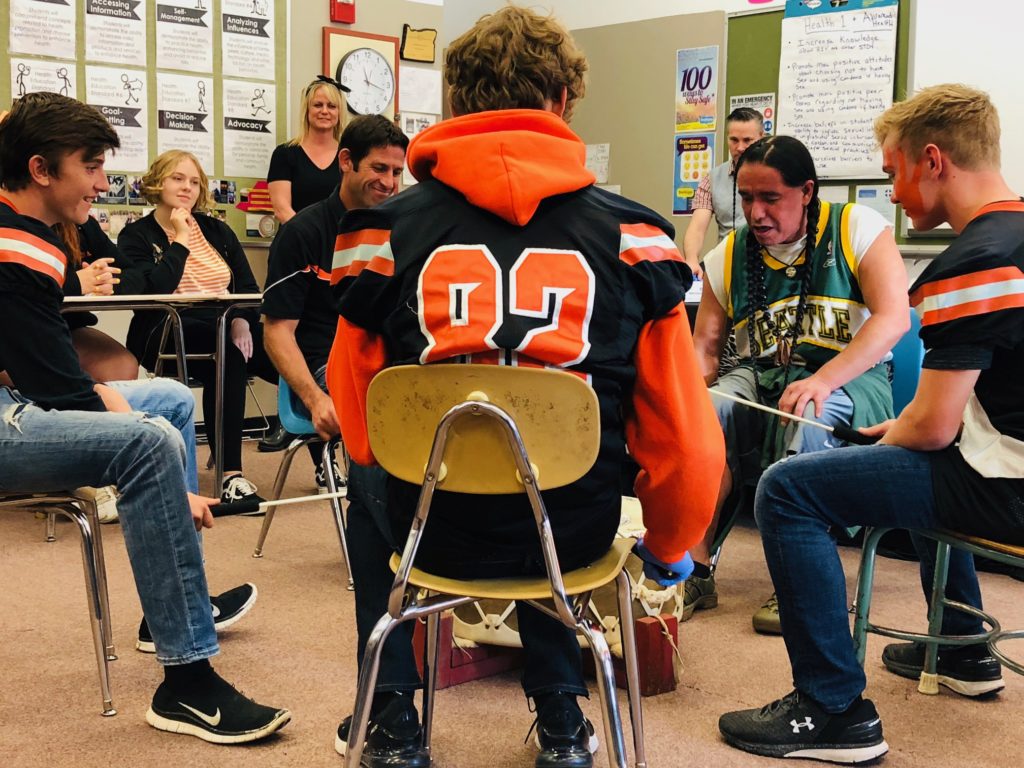
LEARN MORE: Synapses, Stories & Song!
LEARN MORE: Make + Think + Code
During an impromptu discussion with Theresa Smith, the Culture Teacher at Siletz Valley Early College Academy and Shashi Jain, an Innovation Manager and Startup Program Lead at Intel, Theresa described an infuriating event she’d attended, featuring “Black art, Latino art – and Native artifacts” – as if valuable Native art or artists didn’t currently exist…

“I can’t write a nature poem bc that conversation happens in the Hall of
South American Peoples in the American Museum of Natural History
btwn two white ladies in buttery shawls as they pass a display case of
“traditional” garb from one tribe or another it doesn’t really matter to
anyone
and that word Natural in Natural History hangs
also History
also Peoples
hangs as in frames
it’s horrible how their culture was destroyed
as if in some reckless storm
but thank god we were able to save some of the artifacts – history is so
important. Will you look at this metalwork? I could cry -“
–Tommy Pico, from “New Poets of Native Nations“
LEARN MORE: Tommy Pico, Poetry (Paris Review)
LEARN MORE: The Anger and Joy of a Native-American Poet in Brooklyn
LEARN MORE: Tommy Pico Receives the Prestigious Whiting Award for Poetry
LEARN MORE: Art vs. Artifact: How nomenclature defines our value of Indian culture
LEARN MORE: A loss for words: Native American languages under threat
Shashi then spoke with Jeff Leake, the Arts Coordinator for NW Noggin, who with the help of Kanani Miyamoto, the accomplished Noggin Resource Council member for Arts Integration, put him in touch with three celebrated Native artists…
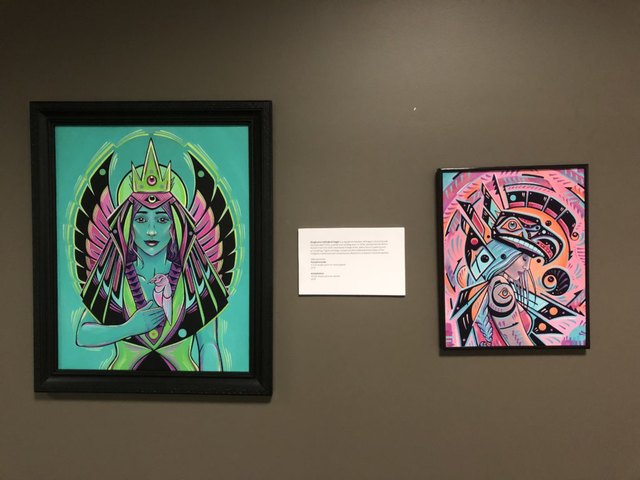

Phillip Benjamin Thomas (Chickasaw Nation), Stephanie Littlebird Fogel (Clatsop and Kalapuya), and Don Bailey (Hupa) all contributed artwork, which is now on display at Intel through December!
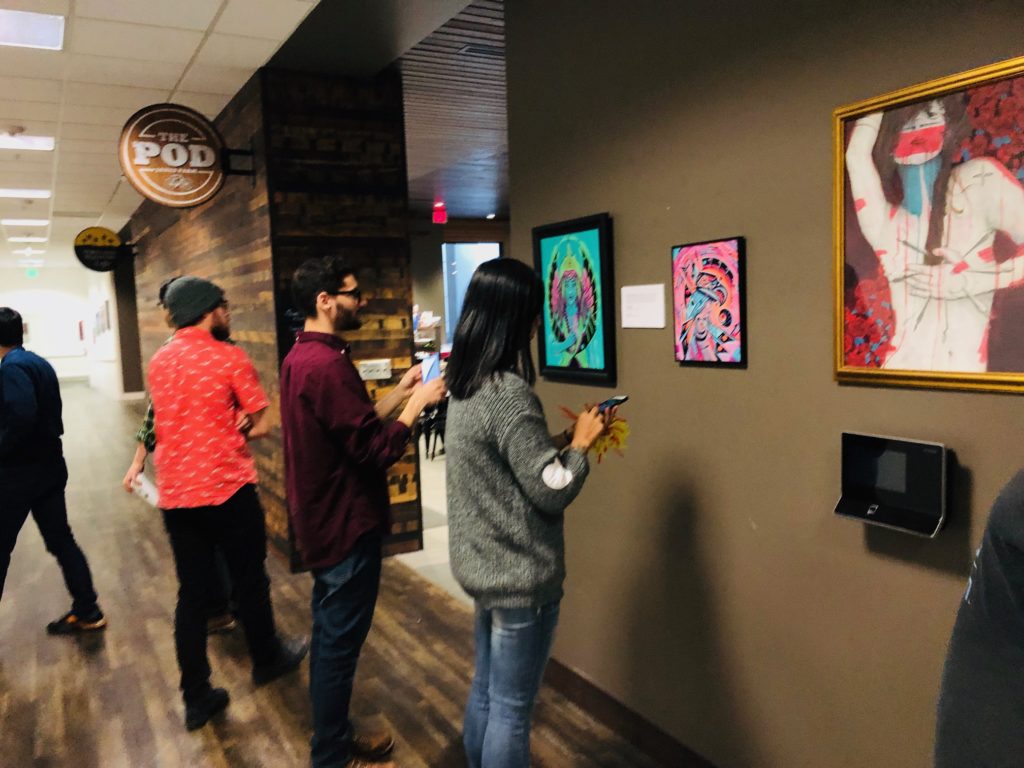
From artist, educator and Noggin Resource Council member Kanani Miyamoto, who introduced Shashi to the artists Stephanie Littlebird Fogel and Phillip Thomas…
“Oregon has a rich Native American history, yet only in 2017 did the state mandate development of a statewide curriculum for K-12 students covering ‘tribal history, tribal sovereignty, culture, treaty rights, government, socioeconomic experiences, and current events.’ We are lucky to live in a state that has one of the largest populations of Native Americans in the United States.
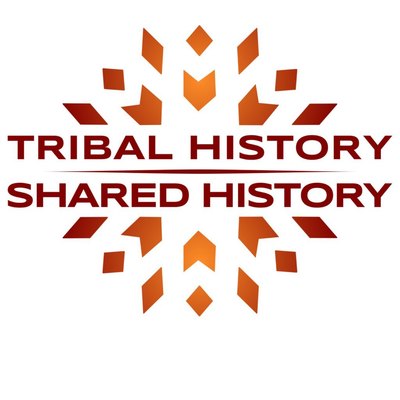
LEARN MORE: Senate Bill 13: Tribal History/Shared History
We are also lucky to experience small waves of change to the art scene here in Portland. The Portland Art Museum recently appointed a new curator of Native American art, Kathleen Ash-Milby, a member of the Navajo Nation. Ash-Milby has a strong connection to Native communities and has already brought more contemporary Native artists to the museum.
LEARN MORE: Kathleen Ash-Milby announced as new curator of Native American Art
LEARN MORE: Native American Art @ Portland Art Museum
LEARN MORE: Not Fragile at the Center for Contemporary Native Art at the Portland Art Museum
Both Stephanie Littlebird Fogel and Phillip Thomas earned a BFA from the Pacific Northwest College of Art in 2015, with a focus in painting and printmaking.
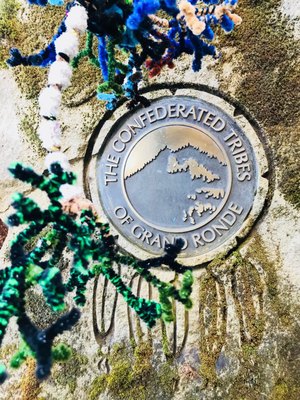
Stephanie Littlebird Fogel is a registered member of Oregon’s Confederated Tribes of Grande Ronde and Phillip Thomas is Chickasaw. Both artists seamlessly and naturally incorporate traditional elements visually and conceptually into their work; it is an inherent part of them.

Phillip Thomas’s mixed media work is multidimensional. It addresses a culture in which surface value takes precedence over the way people interact with each other and their surroundings, creating masks to deny or hide their primal intuitions.
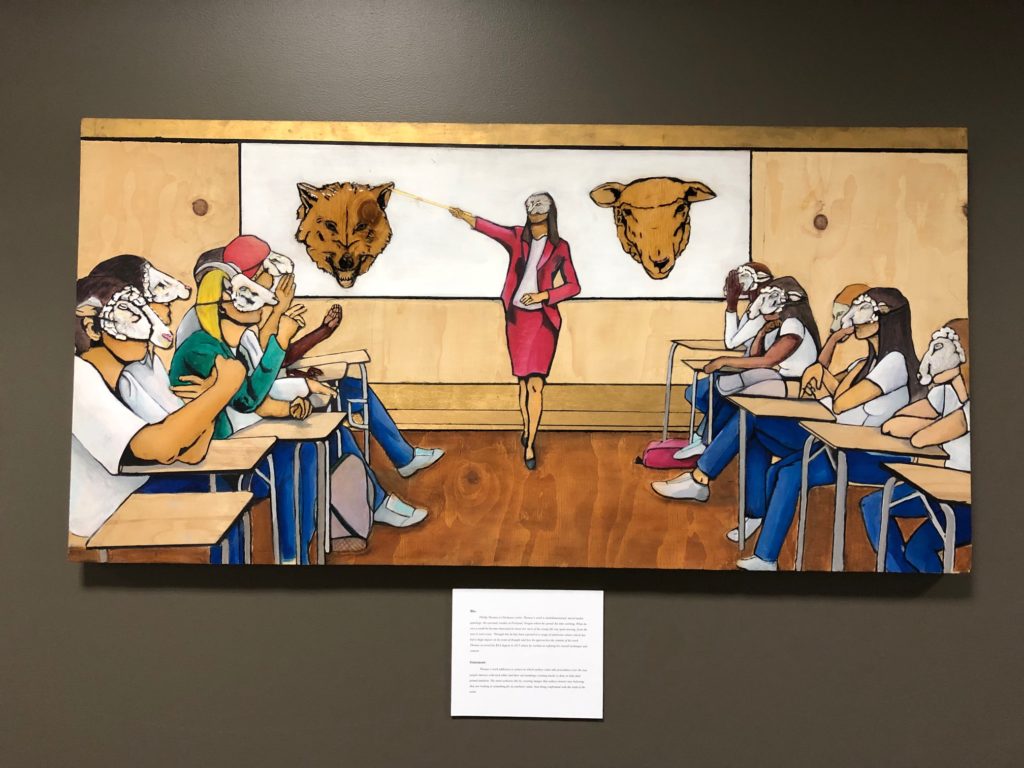
Phillip Benjamin Thomas
Thomas was first inspired by street art as a youth, and most of his young life was spent moving from the east to the west coast. He has been exposed to a range of American culture which has had a huge impact on his train of thought and how he approaches the content of his work. Thomas is a color mixing wizard! He spends his days blending pigments for Gamblin, and his nights are spent painting.
Stephanie Littlebird Fogel’s paintings incorporate the traditional totem styles of her Indigenous ancestors with contemporary illustration and post-industrial palettes. Her attention to detail and her color sensitivity give life and energy to her work and her paintings have the power to captivate viewers.
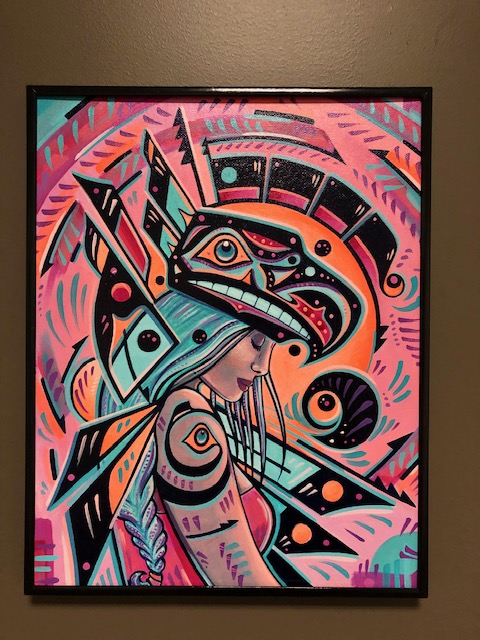
Fogel grew up in tiny Banks, Oregon, and spent a lot of time on her grandparent’s farm outside of town. The tribes she descends from are the Kalapuya and the Clatsop band of Chinuk. Fogel works in marketing, and is also a writer. She does ghost writing work and writes for Oregon Artswatch.
Both Stephanie Littlebird Fogel and Phillip Thomas are available for shows and commissioned work.”
Phillip Thomas: pthomas@pnca.edu
Stephanie Littlebird Fogel : sfogel@pnca.edu
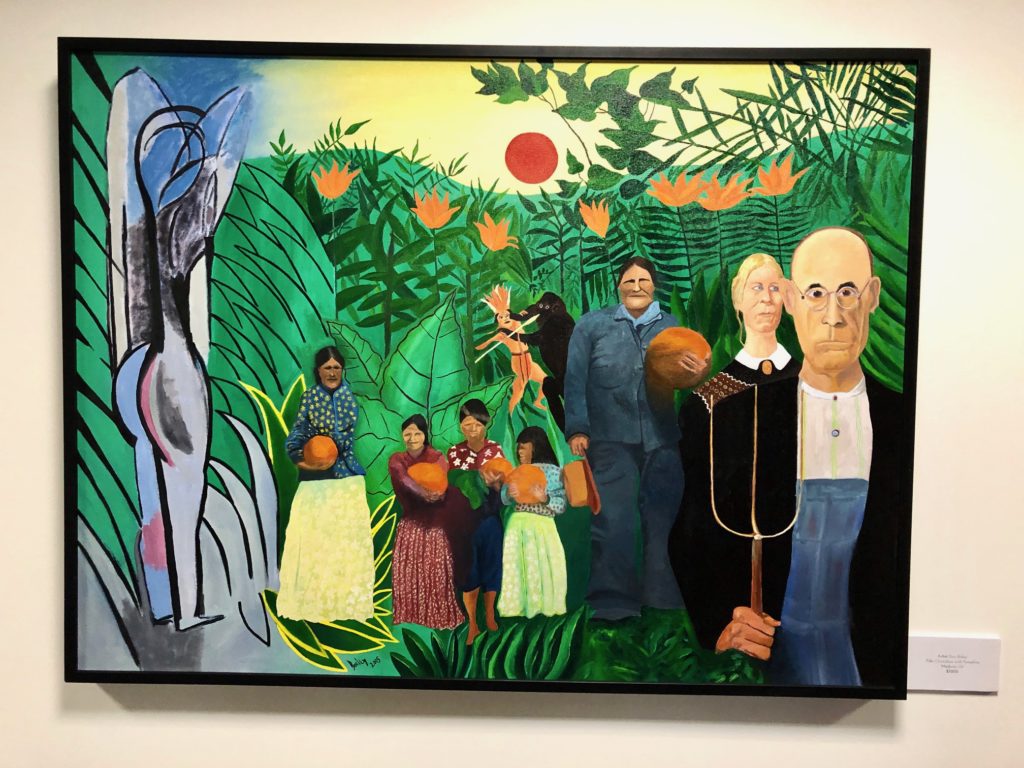
Chiricahua with Pumpkins, by Don Bailey
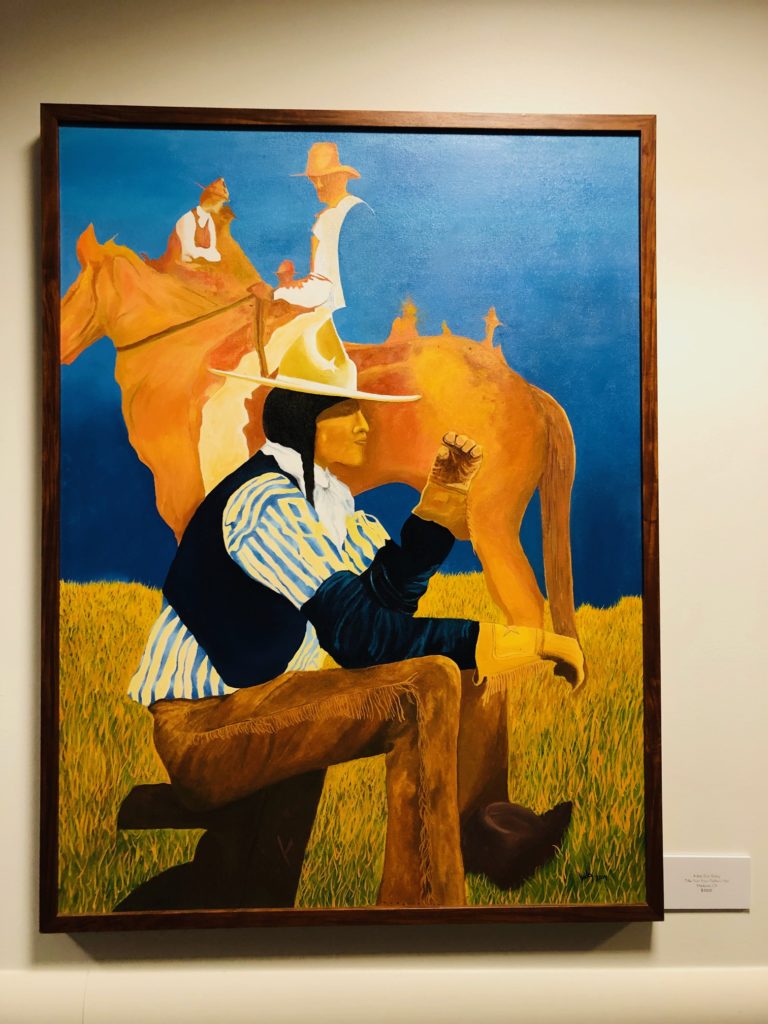
Not Your Father’s Hat, by Don Bailey
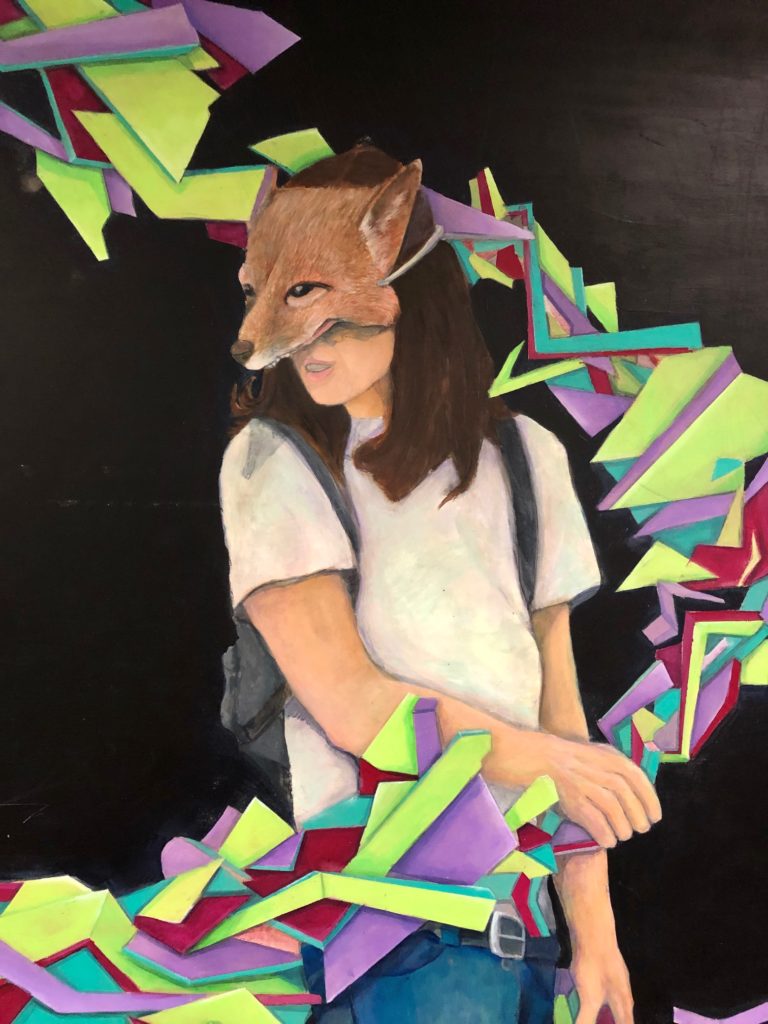
Phillip Benjamin Thomas
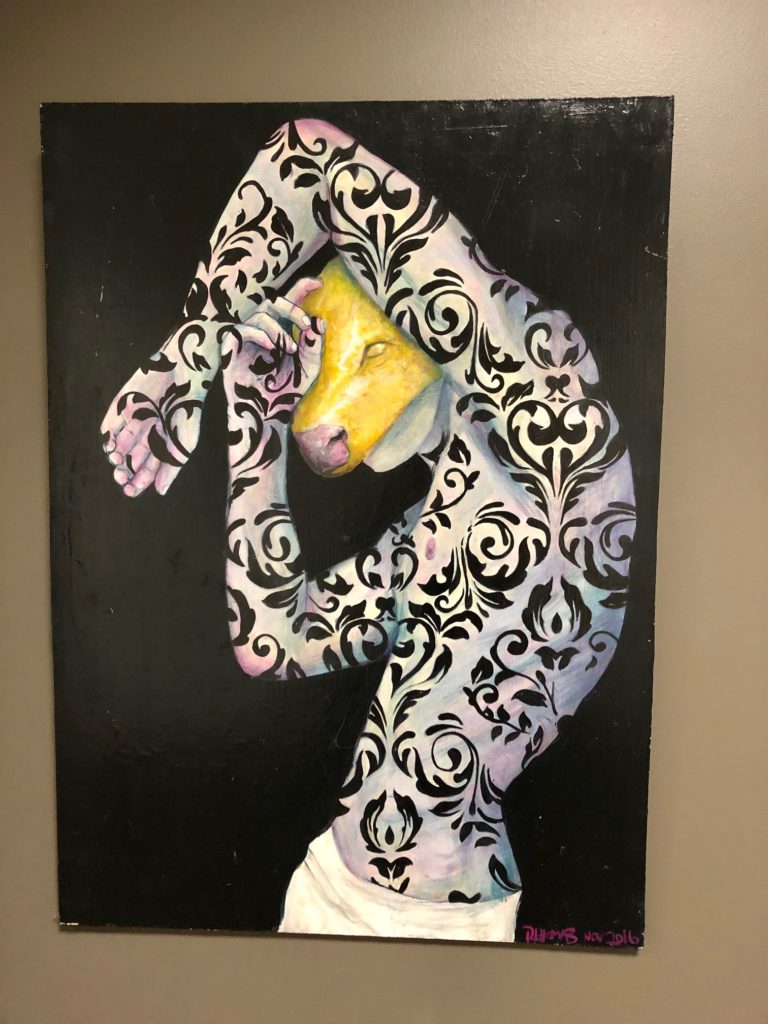
Phillip Benjamin Thomas

Intel volunteers make FIFTY Brain Boxes for NW Noggin!!
We spent a terrific afternoon with our own NW Noggin volunteers Joey Seuferling (Resource Council), Jade Osilla (from Portland State University) and Jacob Schoen (Oregon Health & Science University) answering questions about brains and brain research, while Intel volunteers from the Developer Relations Division (DRD) put together 50 new Noggin Brain Boxes for our upcoming classroom visits! We are hugely grateful to Raea Garcia, who organized the event, and Michelle Chuaprasert and Roger Chandler for providing the Intel resources to make it happen.
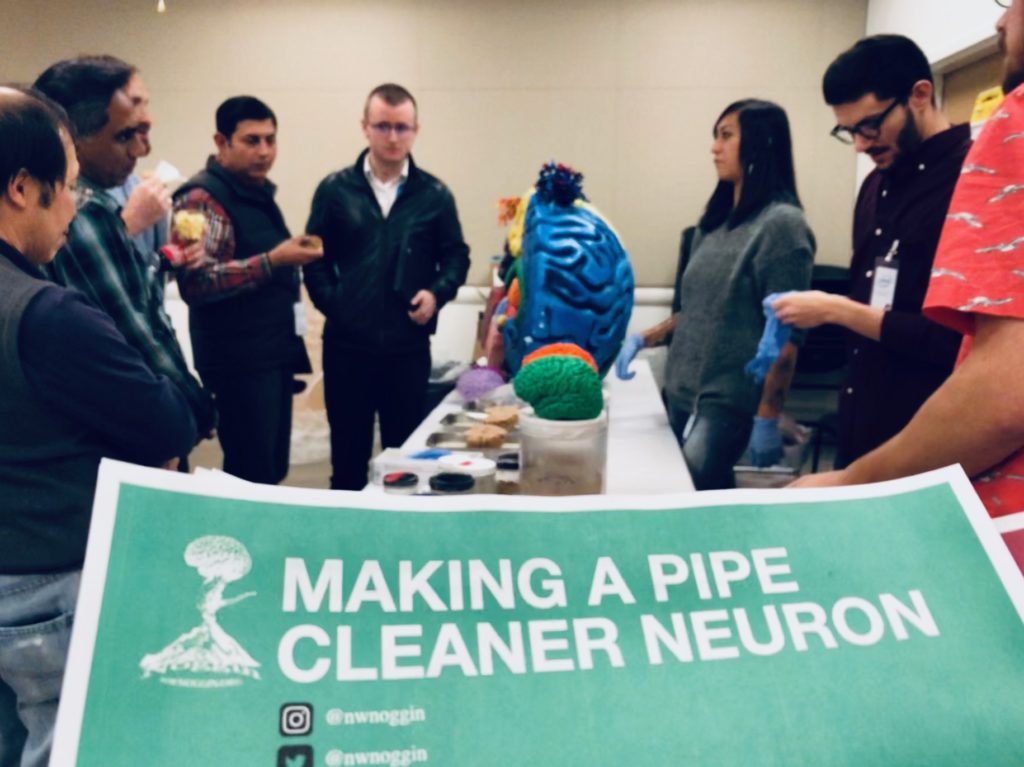
David Shaw, a Graphic Designer, Intrapreneur and Catalyst with Intel, also volunteered his time to dramatically improve the look and accessibility of our Noggin project instructions for making pipe cleaner brain cells, brain maps and more!
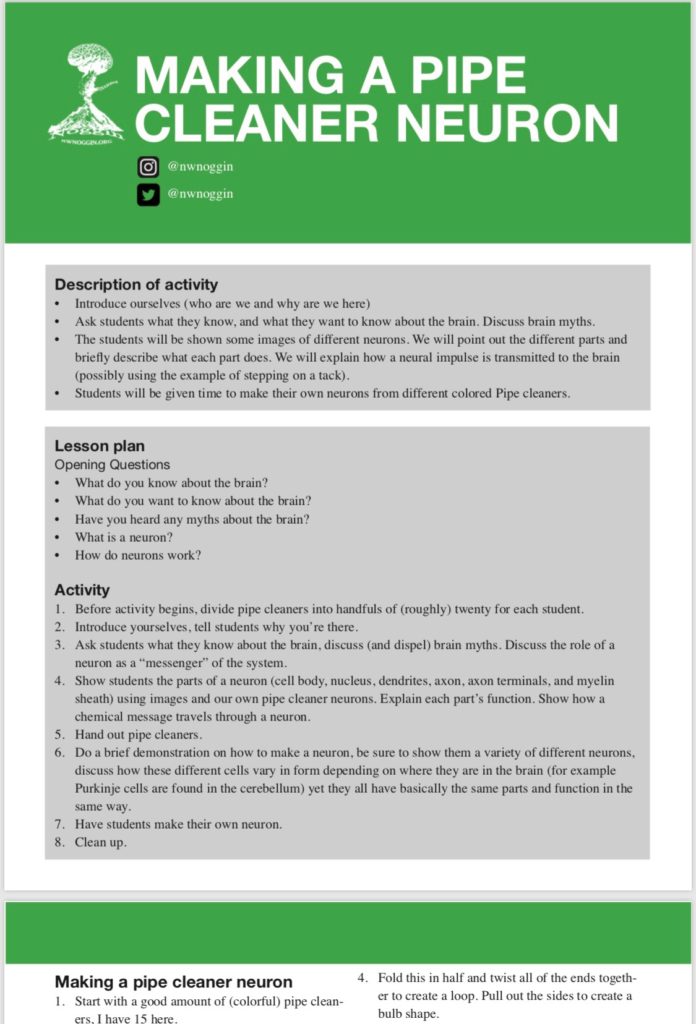
LEARN MORE: MAKE A PIPE CLEANER NEURON
LEARN MORE: STEAM Art Projects
From Noggin Resource Council member Jacob Schoen…
“As part of Intel’s initiative to log more volunteer hours, a variety of employees trickled into the conference room. NW Noggin volunteers had a “brain station” set up next to cookies and soda cans on the refreshment table. There are few times in science that you will see Intel executives, cookies, and human brains in the same corner of the room..!
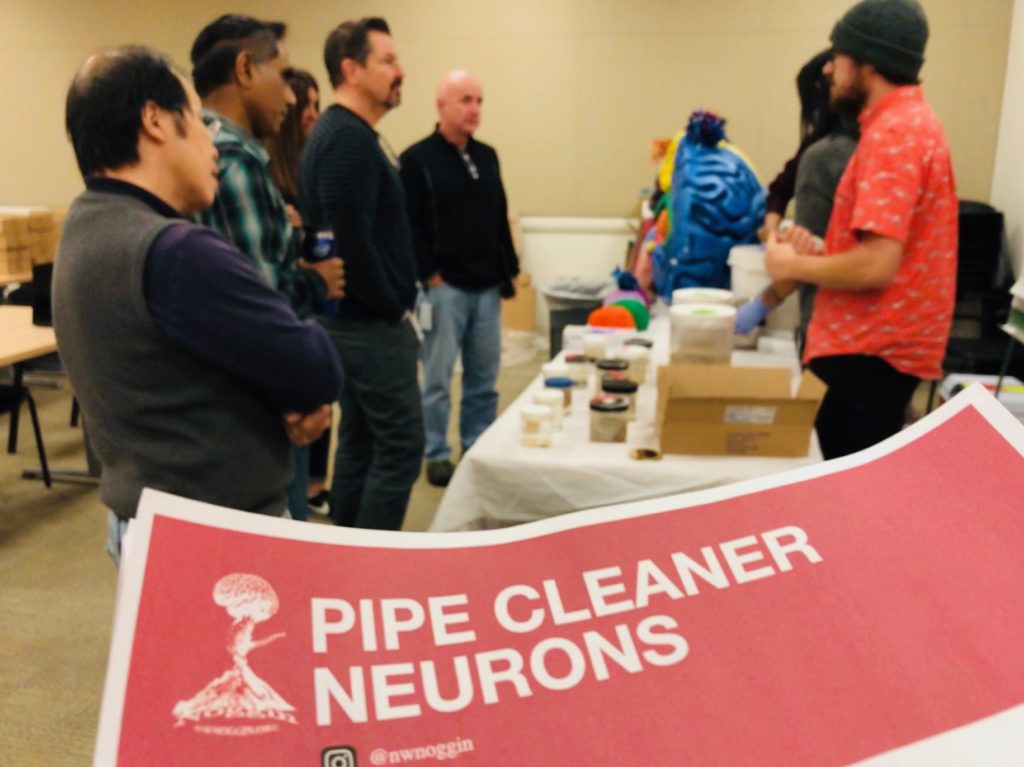
What does working for Intel and studying neuroscience have in common? From the way a computer chip is built to the software that powers it, the ultimate idea comes from the human brain and how we perceive the world. It is easy to want to compare the organization of the brain to a computer chip (we will get there one day!). Even the most advanced computer is nowhere close to matching the processing power of our biological system. The basic component of the brain, the humble neuron, still has scientists fascinated by the magic of its complexity.

I am honored to be a part of an organization that is founded on innovation, intellectual flexibility, and collaboration. We are growing in networks! I commend Intel for challenging their employees to get outside of their comfort zones and contribute to society in a meaningful way. Education, especially about how our brains work, is the vital force pushing us and challenging us to be better members of global society. It is in environments like this that an idea, even the smallest, can rapidly evolve into meaningful action.”
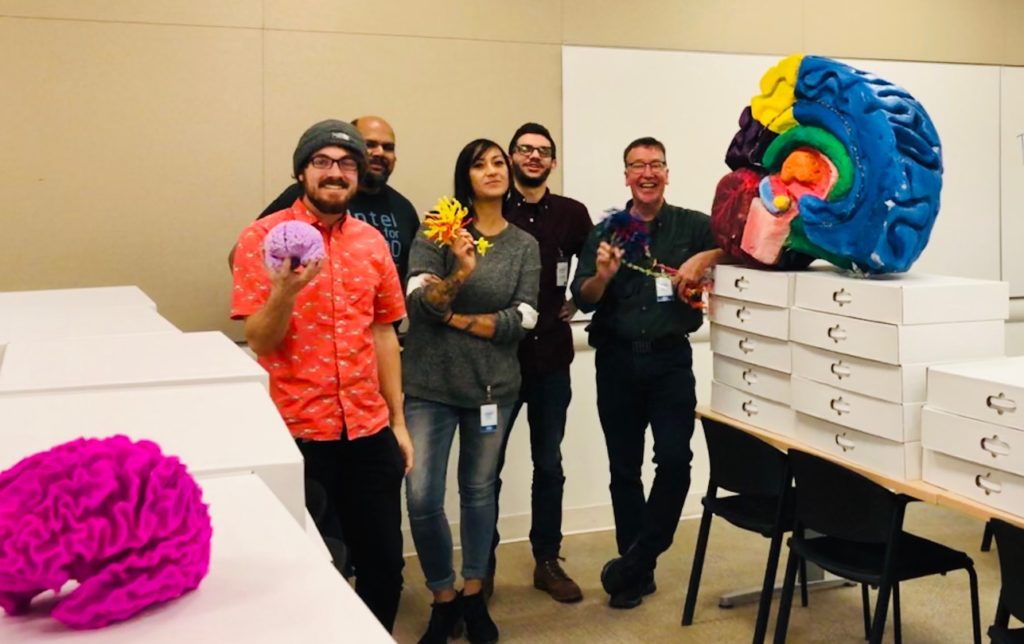
Look at all those boxes!!
THANK YOU Shashi, David, Michelle, Roger and Intel for your support!


